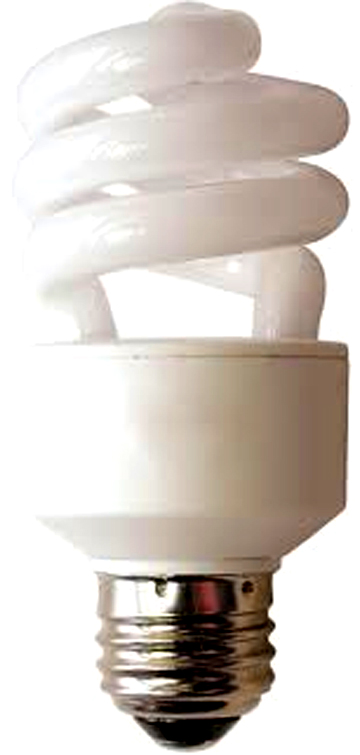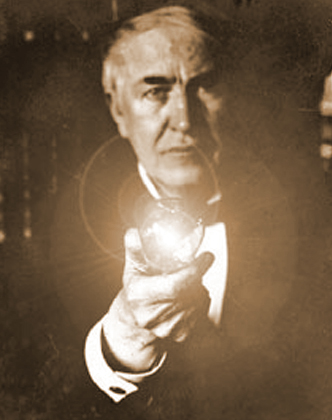Free CFLs from the company that sells you your electricity. Sounds unlikely, doesn’t it. It is Not. It is real.

Check with your local electrical provider. In North Carolina, for instance, Duke Energy will even tell you about them giving you free CFLs (Compact Fluorescent Lamps (Lamps = lightbulbs)) right on your monthly power bill. Using CFLs saves you from using more electricity. Now why in the world would a large company whose business is to sell electricity want to Give away lightbulbs (lamps) that will allow their customers to use Less electricity? Does that make business sense? Not on the surface.
However, if you ask them, they will tell you. Americans use a lot of electricity, with more increases in consumption each year. The issue is: power companies love to sell you electricity, but they definitely do Not like to have to pay to build new power plants. That is a ridiculously expensive arrangement for them. They would rather that you and millions of other customers of theirs use less power and help them avoid the terrible expense of having to build new electrical generation facilities. They actually make more money, because they can use their existing infrastructure instead of making it bigger.
So, they are actually GIVING away up to 15 CFLs to each of their electrical power customers. Free. That’s right. And if you have more than one location and more than one account number, they will give you more CFLs. You are required to switch out your current energy-wasting incandescent lamps (lightbulbs) with the new CFLs in the location associated with each account number. Your power company will even send the CFLs right to your door or P.O. box.
Here’s the facts on the newer CFLs: We here at Home Architects ® used to Not endorse CLFs. Why? Because electrical engineers back then informed us that CFLs contained mercury in them that could contaminate the environment, when they burned out and were discarded into a landfill. So, being environmentally conscious, we recommended against them at that time. However, the new CFLs on the market today (mid-2011) contain much less mercury than they used to contain. So much so, that current engineering and environmental studies indicate that the main source of mercury in America today comes from coal-fired electrical power plants. Mercury naturally occurs in coal, and when coal is burned for electricity, the mercury is released into the atmosphere, where it ends up falling to the ground and into water, where it can be consumed by fish, and when we eat fish contaminated with mercury, we consume mercury, which is bad for us.

Today’s analyses indicate that by using the newer CFLs instead of incandescent lights, coal-fired power plants won’t have to produce as much electricity. About 20% as much as for an incandescent light that produces the same amount of lumens. That is a huge savings. And residential lighting accounts for about 20% of residential energy use today. And replacing an incandescent light with a CFL of comparable lumens (the actual amount of light coming from the light) saves about 75% of the energy used to burn the incandescent light.
Also, the CFL makes about 75% less heat, so your air-conditioning has to work less to make you comfortable in warmer seasons. And one of the biggest reasons: YOU WILL HAVE A LOWER POWER BILL WHEN YOU change out your incandescent lights for CFLs. All of those reasons put together create an excellent excuse for you to change yours.
If that is not enough, you’ll be doing the planet a favor. You will reduce your carbon footprint. Want proof? Here’s a link to the EPA’s “Climate Change – Greenhouse Gas Emissions” website page that allows you to calculate YOUR carbon footprint along with your house and your vehicles. Changing your incandescent lights to CFLs is part of reducing the greenhouse gas emissions. Check it out:
EPA Carbon Footprint of your house and vehicles
This is an eye-opening experience and is easy to do. You just click on the multiple-choice answers and the EPA tells you what your carbon footprint is.
My wife and I have a fairly small carbon footprint, because we live near or at to where we work, and have excellent compact great-mileage vehicles. Oh yeah: and we have changed out all of our incandescent lights for CFLs.
LEDs are even more efficient. We hope that their cost continues to reduce to make them cost effective.
“Warmth:” some people think that CFLs will be like standard fluorescent lights. They are not the same these days. CFLs come in about 4 or 5 optional Kelvin temperatures (“K”) including warm white and daylight white. Try several options to see what works best for you. We put an ordinary CFL in the same light fixture right next to one of the incandescents we were replacing and we could not detect a different “warmth” level. That was enough to convince us.
Here is Energy Star’s website page about CFLs:
Energy Star CFLs
We hope that everyone takes advantage of the power companies’ offer to obtain more energy efficient lighting. This can go a long way to helping reduce America’s carbon footprint and in reducing your own energy bills. That’s a win-win for everyone.
One last comment: be careful about replacing your lights: only use dimmable CFLs on dimming circuits, and 3-way CFLs in 3-way light fixtures, and in protected light fixtures in any exterior light fixtures. Waterproof rated LEDs are probably a better choice for yard lights and other damp locations.
